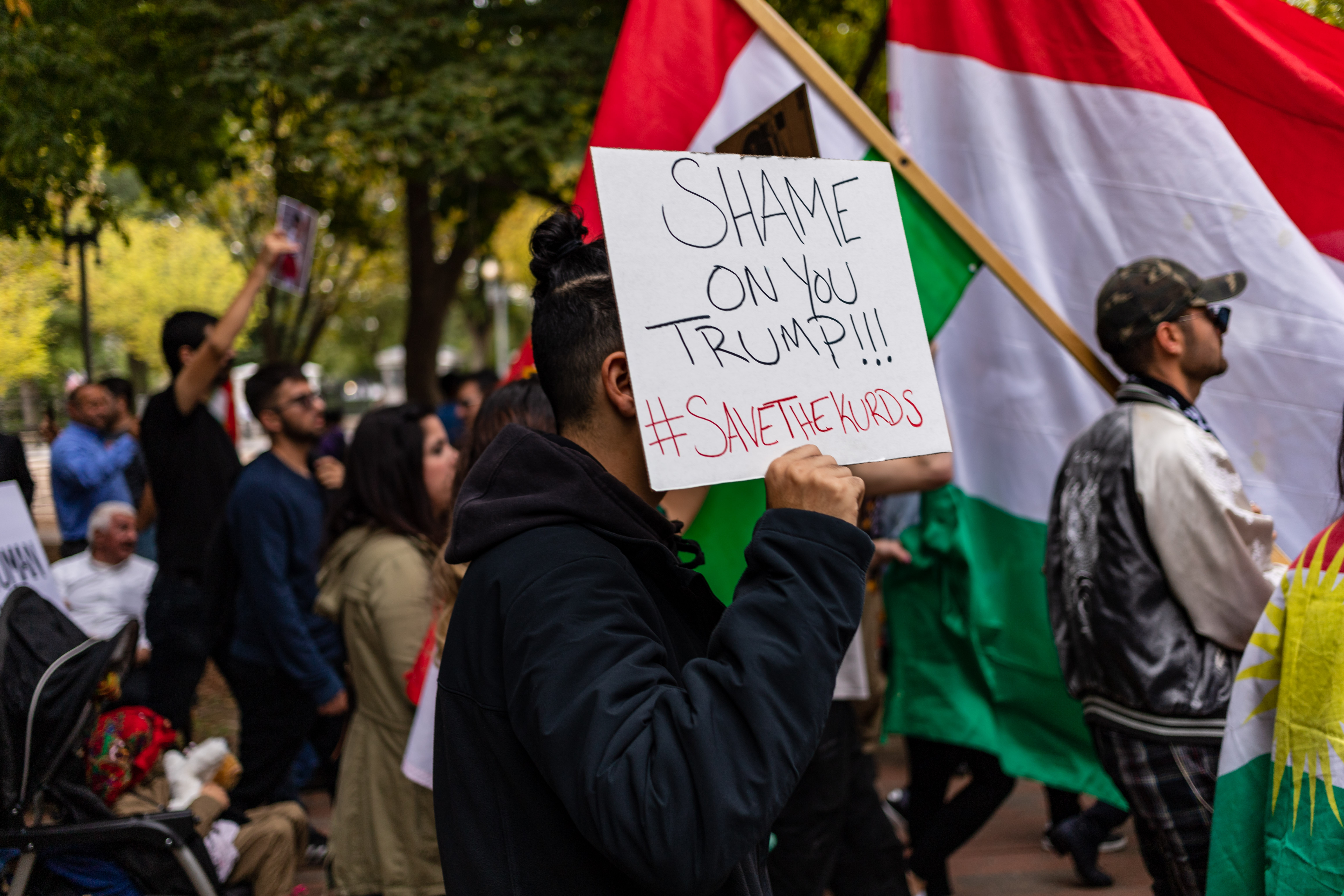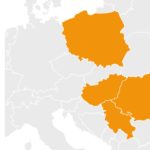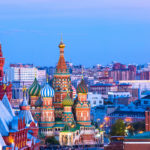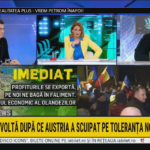By Ana Maria Luca| Bucharest
When the Syrians took to the streets in 2011 after the Tunisian, Egyptian, and Libyan uprisings, surprisingly for the outsider, the Kurds did not immediately join in. There were some protests here and there, but nothing was politically coordinated. There was also no outreach to the rest of the Syrians protesting in Daraa, Homs or Idlib.
The Kurds were obviously on their own and that’s exactly how they remain to this day. They’re a huge ethnic group spread across three countries, a group that can pose at any point a risk to regional security. Until the US withdrawal, the alliance with Washington promised some degree of stability in the region, given the negotiations for an autonomous region in North-East Syria copying the model of Iraqi Kurdistan.
It is not just Trump’s fault, having allowed Turkey’s strongman Recep Tayyip Erdogan to enter Syria. It was a series of historical betrayals, a regional spiderweb of rival political interests and little care for human lives, and also lack of vision and understanding of the Middle East in Western chanceries faced with Russian ambitions of world power that allowed the Syrian conflict to drag on for almost nine years now and lead to absolute disaster across the region, from Iraq to Lebanon.
To explain the crisis in the Middle East one should not only look at Donald Trump and his displayed lack of understanding and care for what happens outside America.
One could also look at Erdogan’s lack of vision for his country’s role in the region. Turkey has played for almost a decade now on the appearance of being a stabilising force in the Syrian crisis. Erdogan’s envoys portrayed Turkey as the regional power that fought against an autocratic regime in Syria, which supported a rebellion against a government that killed hundreds of thousands of its own people and which fostered millions of refugees.
Ankara’s involvement on the side of the Muslim Brotherhood was one of the factors that led, over a few months, to turning the Syrian crisis into a sectarian conflict.
But the Turkish double-edged involvement in the Syrian crisis without a clear cut strategy has been from the beginning one of the destabilising factors that allowed the revolt against Bashar Al-Assad to become a sectarian war that gave way to new global threats whose evolution would remain unpredictable.
October’s invasion of North-East Syria was just one example of Turkish foreign policy forged on the go, based on the fear of losing electoral support rather than on a long-term strategy to deter the Kurds and control the war in a neighbouring country. In this sense, Turkey’s lack of coordination on the Syrian crisis was as toxic as Iran’s calculated strategy and its use of proxies.
The Kurds in Syria
In 2011, a few months after the Syrians rebelled against the government in Damascus, Kurdish anti-Assad activists explain their lack of support for the anti-Assad protests by their history of betrayal with the Arabs. The “us, Kurds vs them, Arabs” discourse was striking, and for many it was surprising, given the fact that the Kurds had been for decades at odds with the government in Damascus, and tensions had spiked in 2004, when the security forces violently cracked down on a revolt in Qamishly.
Before the 2011 Syrian uprising and the war that followed, there were around 400,000 Kurds in Syria, making up around 10 percent of the population. During a census in 1962, the Damascus government required all Kurds in the north-eastern area to provide documents that they had been living in Syria since 1920. Those who could provide all the documents, rather few, were given Syrian citizenship. About half of them, who could not provide all the required documents, were given a permanent residency permit and were known as ajanib, or foreigners. The rest, who could not provide written proof that their family resided in the area since 1920, remained unregistered and were called maktoum, people without a country.
After 1963, when the Baath party came to power, the Syrian government banned Kurds from registering children with Kurdish names, the Kurdish language was banned in schools, Kurdish holidays and political parties were also banned, and shopkeepers were threatened with closure if they displayed Kurdish signs in their stores.
The Kurds rebelled against the Assad regime in 2004 in Qamishli, but the Syrian government crushed their uprising, 30 people were killed and another 100 wounded in the crackdown. They received no support at that time from fellow Arab communities, including the Sunnis. After decades-long state oppression of the Kurdish minority under the Assad government and suppression of their statehood aspirations throughout the region, Arab nationalism, which was the official ideology of the government in Damascus, had done its job and had turned the Sunni Arabs against the Kurds.
In one of the few books addressing the matter of sectarian politics in Hafez al Assad’s Syria Nikolaos van Dam describes how the Syrian leader managed to stay in power much longer than any other leader – from 1971 to 2000 – by playing on sectarian, regional and tribal loyalties and by promoting certain members of the most important minorities, including Christians and Sunnis, to the political elite.
But at the root of Kurds’ hesitation to get involved in the uprising against Bashar al-Assad in 2011 was not only this history of mistrust, but also Turkey’s political involvement in supporting certain Syrian opposition groups.
When the Syrian uprising began in 2011, Ankara shifted its foreign policy in the region: from a “zero problems with the neighbours” policy, to a policy of active – and at times controversial – involvement.
It is not difficult to understand why Erdogan chose to act this way. Iran and Saudi Arabia had been competing for regional hegemony through political proxies, and their strategy had proven more effective than the Turkish one in consolidating their influence.
What Turkey did in Syria was to try to set up proxy groups that would later allow it to influence its neighbour. To this end, Erdogan chose the Syrian Muslim Brotherhood.
Thus, Turkey played an important role in shaping the Syrian uprising as a “Sunni Islamist revolution”, rather than a general revolt against the Assad government.
Syrian intellectuals in Beirut and European capitals were at the time explaining that they wanted a pan-Syrian revolt, regardless of sect and ethnicity. They stated that they wanted democracy in Syria, that the protests were directed at a government they were aware had turned minorities against each other, at a police state that imprisoned or killed anyone who demanded rights, a corrupt government that favored nepotism.
At peace conferences in Istanbul or Geneva, Turkey seemed to support the Syrian opposition and militated, alongside Qatar, for ousting Bashar al-Assad.
What Erdogan in fact did was to give shelter and support to the Syrian Muslim Brotherhood, to boost its importance within the Syrian opposition coalition and its presence at international negotiations and roundtables. The organisation would have been his proxy in Syria. Muslim Brothers in Istanbul spoke to foreign journalists and diplomats about how they dreamt of a Turkish-inspired system in Syria.
Turkey’s political and financial support for the Muslim Brotherhood allowed the group to monopolise the communication of the political groups in exile with the outside world. It also allowed the Brotherhood to reach out to people on the ground through mosques, through humanitarian aid and to switch the focus from a political uprising militating for citizen rights, to a Sunni uprising.
While this gave hope at the time to Erdogan that Turkey, besides being one of the strong economies in the region, would become a regional hegemon, it also created divisions within the Syrian opposition and it weakened it. His strategy eventually led to many exiled pro-democracy Syrians to back down and stay away. It doesn’t mean that Turkey wanted to necessarily to terminate these voices, or that, without Ankara’s support to the Brotherhood, Syria would have become a democratic country. But Ankara certainly contributed to a series of unfortunate events that led to more bloodshed on the ground.
It was understandable why Turkey backed the Muslim Brotherhood: Erdogan himself was a disciple of Necmettin Erbakan, the father of Islamism in Turkey. Ankara’s involvement on the side of the Brotherhood was one of the factors that led, over a few months, to turning the Syrian crisis into a sectarian conflict. (Another important factor was Iran’s presence in Iraq and Lebanon and Tehran’s struggle to keep the Syrian road open for weapons and money to pass through for Hezbollah. Hezbollah’s interference in the Syrian conflict, covert until 2013, when Hassan Nasrallah openly admitted it, settled the fate of the conflict exporting the Lebanese Sunni-Shiite strife to the neighbouring country.)
But shaping the Syrian uprising as a Sunni “revolution” and making political Islam the movement’s most prominent feature, came at a time when Egyptian president Mohammad Morsi, who rose from within the ranks of the Egyptian Brotherhood after the Arab Spring and was democratically elected, was facing large protests over authoritarian tendencies under his rule and human rights concerns.
The international community had already learned that democratic elections could also lead to a less democratic government and, after the failure of the Arab Spring in Egypt and especially Libya, Western decision-makers feared the rise of political Islam.
Meanwhile, Damascus, supported by Moscow, was seeking to cast the revolt in Syria as an Islamist one in the eyes of the international community, and Turkey’s actions helped sow doubts and hesitation in the Western chanceries. Later on, the emergence of the Islamic State and the Al Qaida-linked Al-Nusra Front was providential for this narrative. Thus, Damascus allowed the Islamic State to gain traction by avoiding to bomb its positions in order to portray Assad as a guarantor of stability in the region.
But Turkey also played a role in the rise of the Islamic State and the fact that it spiraled out of control in a very short time. By the time Ankara decided to get involved in the war on the ground, in 2015 and 2016, the Islamic State was already the biggest threat.
Washington had hard choices to make
In 2014, the then Islamic State of Iraq and the Levant (ISIS) took over Mosul and advanced in Syria and Iraq. Its territorial expansion lasted until they reached Kobane, a Kurdish city on the border between Syria and Turkey. The Kurds of the People’s Defense Units (YPG) – the armed wing of the Democratic Union Party (PYD), the dominant Kurdish faction in Syria – were surrounded by better equipped jihadists, but lasted for four months and managed to push ISIS back.
It was a huge victory for the Kurdish militias: as the Sunnis and the Shiites in Syria and the region were fighting, the Kurds had found a way to put their aspirations for an autonomous region in north-eastern Syria on the table.
In practice, the Kurdish militias were practically the only local force honestly battling ISIS. Assad’s state army was using ISIS to associate all the Syrian opposition militias with it, labeling everybody a jihadist and using this as an excuse to bomb regions in Idlib or Aleppo where ISIS was not present. For the first six months of its intervention in Syria, Russia itself bombed opposition-controlled areas a lot more than it did ISIS-controlled areas.
Until 2015, Turkey did not fight ISIS either, because it just could not choose to support the YPG, seen as offshoot of the PKK (whether it was or it wasn’t, it definitely had the unity of the Kurds everywhere as a goal).
The militias’ advance against ISIS made it hard for the US to ignore the Kurds’ effectiveness on the battlefield. Washington had worked at first with moderate Syrian rebel groups and invested millions of dollars to train a force to fight ISIS in Syria. But loyalties shifted and most groups disintegrated on the ground.
For the US, the Syrian Kurds were never the ideal ally, given their alleged links to the PKK, listed as a terrorist organisation since 1997. But they were the only choice against ISIS in Syria.
Turkey offered an alternative ally: its Free Syrian Army, a force it had trained and paid through government funds. But the group was quite a diverse gathering of fighters, including Muslim Brotherhood supporters, Salafists and jihadists, some of whom actually defected to ISIS together with US-donated equipment. Additionally, their lack of training would have required US troops on the ground.
“With no public appetite for a full-scale U.S. ground invasion, we were forced to look elsewhere,” Joseph Votel, former commander of U.S. Central Command (CENTCOM) from March 2016 to March 2019, recently wrote in the Atlantic.
The Kurds were much more reliable ideologically, especially because they fought united by the same autonomy/statehood aspirations.
Turkey stood aside at first, willing to intervene only on its own terms: to fight both ISIS and the PKK/YPG. In fact, it was rather pleased with allowing ISIS to first eliminate its Kurdish enemies. Jihadists were also Sunnis and were battling the Kurds, so Turkey turned a blind eye hoping the jihadists would eliminate the YPG without giving Ankara a headache.
Faced with the rise of a force like the Islamic State in Northern Iraq and Syria, Washington stepped in, in September 2014, to bomb jihadist positions, but it coordinated with a ground counteroffensive of the YPG. By January 2015 the Kurds were completely in control of Kobane.
For the US, the Syrian Kurds were never the ideal ally, given their alleged links to the PKK, listed as a terrorist organisation since 1997. But they were the only choice against ISIS in Syria, just as the Shiite militias backed by Iran, like Asa’ib Ahl al-Haq or the Badr militia – which had bombed US troops during the Iraq war – were some of the very few choices to help fight ISIS in Iraq. Without the Kurds, Trump alone could not have declared victory against the Islamic state, as Votel put it.
Ankara’s regional power games
Erdogan was not at all at peace with Washington’s choice of allies. At the end of July 2015, Turkey launched a massive air offensive against the Kurdistan Workers’ Party (PKK), hours after it had agreed to let the United States to use its airbases to strike against ISIS in Syria. The Turkish military reportedly only gave a mere 10-minute notice before striking the PKK in the mountains of northern Iraq, calling the move “a synchronised war on terror”.
Domestically, in 2015, Erdogan’s political prospects were quite similar to those in 2019: he was looking to bolster his party’s popularity after the first hung parliament resulted from a general election. Therefore, Ankara was less concerned about ISIS, and more worried about the recent success of the Kurdish Democratic Union Party (PYD) and its People’s Protection Units (YPG) militia in Syria.
In 2015 negotiations with Barack Obama, as in 2019, Erdogan wanted a buffer zone in Syria, a 90-kilometer zone starting from Jarablous and the Syrian Kurdish region to Azaz. The zone was to be free of ISIS, but also free of Kurds, especially the PYD. In 2015, however, Erdogan also asked for regime change in Syria. In 2019, he was only concerned about the Kurds.
In fact, the PKK militants struck first. On July 22, 2015 the group assassinated two Turkish officers in the town of Ceylanpinar in southeastern Turkey, in retaliation for a suicide bombing that killed 34 Kurds in Suruç, a town in the same region. The suicide bomber was a Turkish student who’d been in contact with ISIS. A series of violent incidents between PKK militants and the Turkish military followed and the PKK even declared an autonomous region in Turkey’s Dersim Province.
Adopting a hardline stance on the Kurdish issue usually does bring the Turkish AKP some of the nationalist votes. But in 2015, the move was short-lived. It was only meant to send a message to the PKK to stop pursuing a radical agenda. In 2019, Erdogan’s intentions were not so short-term.
The US stance in the Middle East has always been a gamechanger. In 2015, the Obama administration was not at all inclined to turn a blind eye to Turkey’s reckoning with the Kurdish nationalists by any means. At the time, the US presence acting as a force that kept Ankara from directly attacking, the PKK prevented unrest in Turkey, but it was quite clear that Erdogan would move his operations into Syria next, into the de facto Kurdish autonomous region.
The Kremlin is no peacemaker. Its strategy is to freeze conflicts rather than resolve them, and use the perennial instability in its favour. When Moscow brings troops on the ground, it does not work on development and it doesn’t help build institutions to create a sustainable democracy where minority rights are respected.
It was also clear that North-East Syria was a powder keg and that Ankara was going to sooner or later aim at the PYD. But Erdogan could not make that move with US troops on the ground.
Turkey and the Free Syrian Army (FSA) that it had trained and whose members were on the Turkish government payroll started Operation Euphrates Shield in 2016 to push the Islamic State from Jarablus to Manbij and then to the Euphrates River. Despite US troops wanting to cooperate with a NATO ally, the Turkish-backed FSA fighters chased them away calling them “crusaders”.
It took another three years, for Trump to arrive at the White House and Erdogan to lose local elections in Turkey’s main city, Istanbul, for the latter to launch an offensive in North-East Syria against the Kurds. This happened despite the fact that, on the ground, the US forces and Turkey had finally negotiated a deal to establish joint patrols inside a safe zone in Syria.
For the moment, Turkey’s position as a buffer in the context of the migration crisis and also a NATO ally remains important for keeping the status quo in the Middle East and refugees away from Europe’s shores. Despite the large-scale human rights abuses after the failed coup against Erdogan in 2016, Western countries, including the US and the EU, have tolerated the harsh crackdown on opposition forces, for the sake of keeping stability in the region and the Syrian refugees on Turkish territory.
The EU’s strategy to externalise the so-called “migration crisis” to Turkey in exchange for development funds has now backfired: maybe it did keep Syrian refugees from crossing the seas to Europe, but Brussels is now totally powerless in the face of Erdogan’s moves and he is not ashamed to say it out loud.
Enter Russia?
Sure, said Vladimir Putin. Why not? Since the beginning of the Syrian conflict, the West has been unsure whether to back one side or another in Syria or how much to back any. The Kremlin has never had any doubts and backed the government in all international fora.
Towards the end of 2015, Russia announced it was getting involved militarily in Syria to bomb the Islamic State. Only, together with the government in Damascus, it bombed the region of Idlib first, where the Islamic State was nowhere to be seen. Nevermind, they are all Islamist terrorists, said the Kremlin.
Meanwhile, it was the Kurds who managed to keep the Islamic State at bay, while in Iraq, the state army and the Popular Mobilisation Forces, mostly Shiite militias backed by Iran, did the job.
Until recently, when Donald Trump claimed he wanted to avoid Washington being sucked into another “endless Middle East war” and made the deal with Erdogan, the Kurds were hopeful of autonomy, thinking that the US would support their plight after having fought the jihadists together. They were also hopeful of an Iraqi Kurdistan scenario, and the US was contemplating the possibility of a reasonably stable region in Syria.
Until 2015 they were shooting down each other’s fighter jets over Syria, but Ankara and Moscow became friends in the meantime, especially after the 2016 failed coup against Erdogan. Erdogan had some serious human rights problems after the extensive post-coup purges and the US and the EU were not happy with that, while Putin understood completely.
Turkey and Russia made a deal in mid-October 2019 for joint control of territory in Syria which was formerly held by Kurdish forces. Russia had also mediated a deal between the Kurdish forces and the Assad government. It currently has troops on the ground and acts like the guarantor of a ceasefire and power-broker between the Kurdish militias and Turkey.
For the Middle East, a power broker like Russia getting involved in Syria is bad news and that is largely Erdogan’s fault. Russian bombers arrived in Syria to support Assad and bomb the rebels, no matter who they were, but they only became kingmaker this October with help from Trump and Erdogan.
Indeed, the US has made many mistakes in the Middle East. But the Kremlin is no peacemaker. Its strategy is to freeze conflicts rather than resolve them, and use the perennial instability in its favour. When Moscow brings troops on the ground, it does not work on development, it doesn’t bring in billions of dollars in aid, it doesn’t develop civil society and it doesn’t help build institutions to create a sustainable democracy where minority rights are respected. Moscow keeps autocrats in power and Putin likes them secular.
Erdogan is not secular and does not support secularism in Syria. Turkey and Russia are bound to fall out of love at some point in the not so distant future, despite becoming pragmatic allies based on the temporary state of affairs in Turkey and the region.
Erdogan still funds Islamists on the ground in Syria – the Free Syrian Army, which has been accused of committing atrocities against the Kurds and hostile acts against allied US troops. Moscow knows it.
Meanwhile, Russia backs Assad and has just brokered an alliance between Damascus and the Kurds. Assad himself still sees Erdogan as a supporter of Islamism and so do the Kurdish militants. But whether Assad will allow the Kurds autonomy in exchange for their support against the Islamist brigades sponsored by Turkey remains to be seen.
Many feared that the US completely leaving the stage would crack the door open for Russia to become indispensable for the stability and the balance of power in the Middle East. The reality, however, is that Russia does not have a plan for the Middle East and looking at the way it shapes its foreign policy, it does not all the time make the immediately obvious rational choices.
What motivates the Kremlin is simply to embarrass America. It watches and waits for it to make mistakes, so it can exploit its failures and capitalise on Trump’s blunders to boost its own image as a world power.
So far, it has worked. But it will not work in the interest of peace in Syria – a problem still no one seems to care or know how to solve.
ANA MARIA LUCA is a senior researcher with GlobalFocus Center. During 2008-2016 she was based as a journalist in Beirut, Lebanon, and covered the Arab Spring, the Syrian conflict and Middle Eastern politics. She holds an MA in International Affairs from the Lebanese American University and a BA in Journalism from the University of Bucharest.




